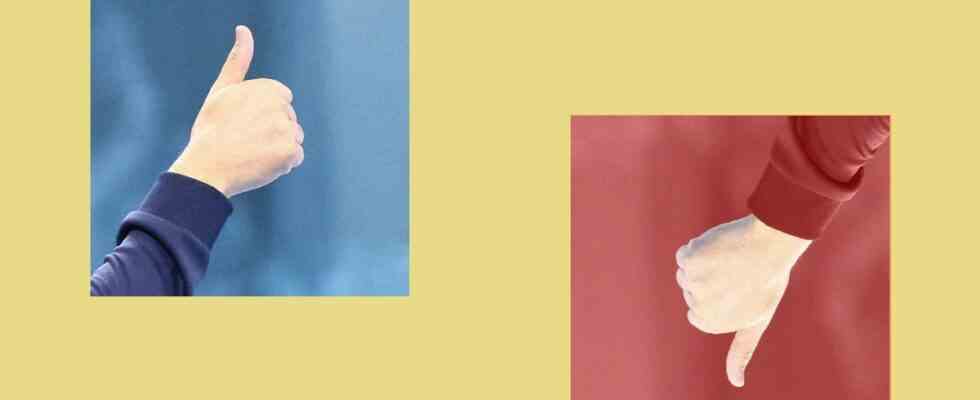When everyone who could fled to the home office in 2020, the omnipresence of emojis also took hold of the working world. Colleagues used to meet in the coffee kitchen and in the meeting room, but now they sent messages and dialed into conference links. The only problem is that digital communication is particularly prone to misunderstandings. Especially when Generation Boomer (born 1946 to 1964) chats with Generation Z (1996 to 2010). Mainly because programs like Microsoft Teams, the home office coffee kitchen replacement par excellence, often don’t even think about the younger generation. Because what’s ready on the emoji palette when you want to react to a message from your colleagues creates more problems than it solves.
It goes so far that someone had to dwell on it. On the internet of course on the discussion platform Reddit: “Am I not old enough to feel comfortable with the thumbs-up reaction?” he asks in the forum. Now you could quickly forget that as the self-pity of a single oversensitive person, but under the post there are piles of answers that see it the same way. For example, one user – she is 24 years old – explains that the thumbs-up emoji seems “passive-aggressive” and “rude” to her. After all, it’s normal on the Internet to react in this way to particularly stupid posts. Thumbs up – but ironic. This can lead to awkward situations: a young colleague makes a suggestion, the older boss wants to signal her approval and gives her digital thumbs up – the misunderstanding begins.
Heart and tears laugh emojis are out among the young generation
However, teams – to be honest – don’t leave too much leeway, understandable across generations, to agree to a message via emoji. The “heart” emoji, for example, is a bit too emotional in some contexts. “I sent the bills” – bang, heart on it. That’s maybe a bit of an exaggeration. And – just a side note – the “heart” emoji has been clearly branded as an elder emoji for years. Just like the tearful laughing emoji, by the way. If you want to look young at heart, we recommend the skull emoji instead, in the sense of: I laughed to death. Not in the sense of: Am so old that I am close to death.
What leads to a deeper explanation of the problem is semiotics, i.e. the theory of signs. In a nutshell, we have known for more than a hundred years: the relationship between the signifier (in this case the emoji itself) and the signified (to a certain extent what is meant by the emoji) is arbitrary (i.e. coincidental) and at the same time conventional ( i.e. socially determined). Which means nothing other than that it is in the nature of things that emojis can mean different things. Anyone who has learned that such a thumb follows exceptionally stupid statements interprets them that way. Not out of self-pity, but because conventions dictate it. But they can change. Emojis are the best example of this: they and their predecessors, emoticons, were not part of communication at all until computer scientist Scott E. Fahlman invented them 40 years ago.

